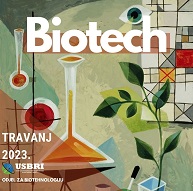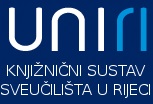Tissue regeneration using Pixie dust
Earlier this year, a team of scientists from the McGowan Institute at the University of Pittsburgh succeeded to regenerate entire tissues using what they call “Pixie Dust”. The substance they used is actually pulverized Extracellular Matrix (ECM) isolated from a pig's bladder that they applied to a cleaned wound after a man lost his finger. They stitched the wound back together and followed his condition. It took three months for the wound to heal and it was replaced by healthy bone, soft tissue and even a finger nail.Dr. Stephen Badylak, Professor at the Department of Surgery and the head of the team, reports that they have been focused on two areas. Besides digit extension where they are able to regrow fingers cut of under the fingernails, they have also been working on treatment of burns.
Extracellular Matrix was in this case obtained by purification of pig's bladder which was cleaned from all cell debris and DNA, but ECM can also be purified from other animal species, like dogs and cat. This scientific breakthrough has great potential for use in military and civil purposes and is also recognized by DARPA (Defense Advanced Research Projects Agency) which should ensures its transfer to practical use.
Sources:
1. Man Regrows Finger Tip With Pigs Bladder. Human Limb Regeneration. [cited 2015 Dec 17].
2. Coakley DN, Shaikh FM, O’Sullivan K, Kavanagh EG, Grace PA, McGloughlin TM. In vitro evaluation of acellular porcine urinary bladder extracellular matrix – A potential scaffold in tissue engineered skin. Wound Med. 2015 Dec;10–11:9–16.
3. Schilling R. Tissue Repair With Extra Cellular Matrix. 2015 [cited 2015 Dec 17]
Kontakt
Fakultet biotehnologije i razvoja lijekova
Radmile Matejčić 2
51000 Rijeka
Tel. +385 51 584 550
ured@biotech.uniri.hr
OIB: 64218323816
IBAN: HR3724020061400006958
Radmile Matejčić 2
51000 Rijeka
Tel. +385 51 584 550
ured@biotech.uniri.hr
OIB: 64218323816
IBAN: HR3724020061400006958
Studentska služba
Radmile Matejčić 2, O-047
Radmile Matejčić 2, O-047
Tel. +385 51 584 772 / 771
studentskasluzba@uniri.hr
http://studentska.uniri.hr/
Nadležna studentska liječnica:
dr. sc. Marijana Turčić, dr. med. spec. školske medicine
Radmile Matejčić 5, Rijeka
051/584 875 / 876
e-mail:
skolska.kampus@zzjzpgz.hr
http://studentska.uniri.hr/
Nadležna studentska liječnica:
dr. sc. Marijana Turčić, dr. med. spec. školske medicine
Radmile Matejčić 5, Rijeka
051/584 875 / 876
e-mail:
skolska.kampus@zzjzpgz.hr













.png)




